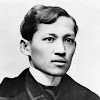Facts About Mangoes: Mango is a type of succulent fruit. It is also called the king of fruits in India. Its original species is called Indian mango, whose scientific name is Mangifera indica. The species of mango is called Mangifera. The species of this fruit was earlier found only in the Indian subcontinent, after which it gradually spread to other countries. Most of it is produced in India. It is considered the national fruit in India, Pakistan and the Philippines, and in Bangladesh its tree has the status of a national tree.
Interesting Facts About Mangoes
- Mango trees are harvested once a year.
- Their flowers are pollinated by insects.
- Less than 1% of the flowers will mature.
- Trees can still bear fruit after 300 years.
- Mangoes are related to cashews and pistachios.
- It takes about 4 to 6 years for a tree to bear fruit.
- A firm fruit will ripen at room temperature within a few days.
- Their trees can grow up to 100 feet with a canopy of over 35 feet.
- India is the largest producer of the fruit, followed by China and Thailand.
- The first attempt to introduce mangoes to the U.S. was made in Florida in 1833.
Amazing Facts About Mangoes
- It takes about 4 months for the fruit to mature and each one is harvested by hand.
- Only Florida, California, Hawaii, and Puerto Rico can grow mangos in the United States.
- Mango leaves are toxic for cattle feed. Burning their leaves, wood, or debris is also toxic.
- In India, Gifting someone a basket of Mangoes is considered as the Relation of Good Friendship.
- The fruit is not judged on ripeness by color, but by squeezing. A ripe mango should have a little give.
- In 2010, Bangladesh declared the Mango tree as its National Tree. Earlier, Bangladesh had no National Tree.
- The majority of the mangoes sold in the United States come from Mexico, Peru, Ecuador, Brazil, Guatemala, and Haiti.
- It is its popularity only that three nations- India, Pakistan, and the Philippines have adopted Mango as their National Fruit.
- Around 300 or 400 A.D., the seeds spread from Asia to the Middle East, East Africa, and South America thanks to traveling humans.
- The famous Persian poet Amir Khusrau from 13th century A.D., dubbed mango the Naghza Tarin Mewa Hindustan, the fairest fruit of Hindustan.
All Information About Mangoes
- There are about 4,000 acres being cultivated in Puerto Rico commercially for the last 30 years; however, the majority of the crop goes to Europe.
- In addition to India, mango is also the national fruit of India, Pakistan and Philippines. Pulpy, juicy and delectable, mango is a true star of the summer.
- It is said that the rich and pulp flavour of the fruit also caught the fancy of Alexander the Great, who upon his return to Greece, carried enough mangoes along.
- There are over 500 varieties throughout the world. The most popular varieties sold in the United States are Tommy Atkins, Haden, Kent, Keitt, Ataulfo, and Francis.
- It is said that mangoes were a favourite of emperor Jehangir, who once famously said, that none of the fruits in Kabul could match up with the flavour of his much beloved mangoes.
- According to Indian history, Mughal emperor Akbar (1556–1605 AD) was so fond of mangoes that he planted 100,000 mango trees at his Lakhi Bagh orchard located at Darbhanga in Bihar.
- There are over 500 mango fruit Varieties Grown all over the World. They are mostly ripening in the Summer. Their sizes, shape, color, taste varies from each other. It may be orange, yellow, green or red.
- Mango is one of the oldest fruits known to India. Legends claim that they were first grown in India over 5,000 years ago. It is often said that the hills of north-eastern India adjoining Myanmar are likely centre of origin of mango.
- In Ancient India, mango trees were a symbol of prosperity. Hsiun-Tsang, one of the earliest writer-travellers to ancient India, mentioned in his accounts how the ancient Indian rulers, planted mango trees along roadsides as a symbol of prosperity.
- One of the most loved variety of mangoes; the langda aam, was named after a lame farmer of Varanasi, who noticed the variety growing in his backyard. Soon people started referring to this variety of mangoes as langda aam. In Hindi, langda means lame.
Healthy Facts About Mangoes for Kids
- Mango leaves are filled with remedial and medication attributes itself. They are rich in vitamins, minerals, nutrients, and antioxidants, which help in treating or preventing diabetes, blood pressure, restlessness, gall and kidney stones, respiratory problems, and dysentery.
- In South India, mangoes were referred to as aam-kaay in Tamil, which became maam-kaay owing to the many local dialects down south. Somewhere along the line, it started getting referred to as maanga. It was the Portuguese who finally gave it its present name 'mango,' and popularised it everywhere.
- India is termed as the “Mango Capital of the World” as it tops the list of Mango producing countries followed by China, Thailand, Indonesia, and so on. Although India is the largest Mango producer country, in terms of international trade, it accounts less than 1%; India consumes most of its own Mango production.
- According to the book, 'A Historical Dictionary of Indian Food', mango grafting was first used by Portuguese and yielded the famous varieties like Frenandin. The sea-faring Portuguese were so lured with the mangoes that they took the fruit and its seeds and introduced it to many other countries who had never tasted the fruit.
- Mangoes are of huge importance for Buddhists. They consider it sacred because the Buddha was accustomed to rest in the lush mango groves. Mangoes were also considered one of the best gifts to be exchanged amongst one another. Buddhists monks would also carry a few mangoes with them on their long expeditions, popularising the fruit.
- A cup of Mango pulp provides 100% of your daily requirement of Vitamin C and other nutrients. Besides Vitamin C, Mangoes are rich in Vitamin A, Vitamin B, and other antioxidants, which aid in keeping your immune system strong enough fights cancerous cells, bacteria and with several viruses, cholesterol control, and helps in vision care.
- The Mughal Patronage also played a role in mango grafting. For the longest time, it was allowed only in royal gardens, until Shah Jahan lifted the limitation, notes the book 'A Historical Dictionary of Indian Food' by food historian KT Achaya. The earliest examples of grafting of mangoes in Mughal rule yielded varieties like Tota Puri, the Rataul and the ever-so delightful Kesar.
- Burning of Mango leaves in woods is not advisable as they are toxic in nature and can infect Human eyes and lungs severely. Moreover, mango leaves are considered toxic for cattle feed as well. Earlier it was a practice to feed mango leaves to cattle so that their urine becomes dark yellow and that can be used in preparing dye. But later, it was banned seeing the repercussions in animals that are used in farming and all other cultivation processes.
- Hindu scriptures are filled with folklores and legends surrounding mangoes. In one of the oldest myths, mango is said to be the daughter of Sun God Surya. One day upon falling on ground from a mango tree. The mango turned into the beautiful princess Surya Bai. Charmed by her beauty and grace a king falls in love with her and vows to marry her. On seeing the newly wedded couple, the king's first wife curses and turns the princess into ashes. It is said that out of the ashes rose another magnificent mango tree. And, when one of the fruits fall on the ground, the princess reincarnated. The King also recognises the princess as his bride from the previous birth and the couple reunites.














0 Comments